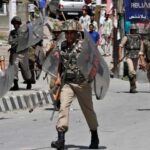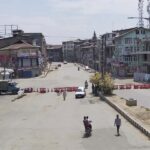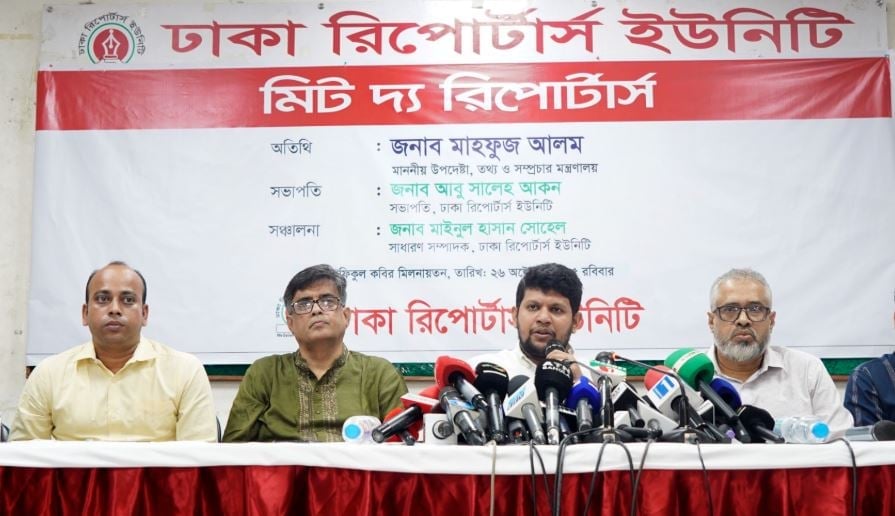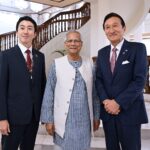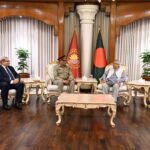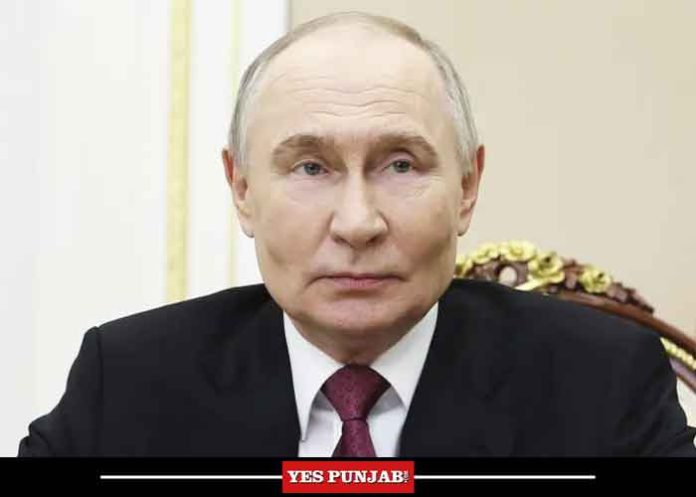
INSIDE RUSSIA
President Vladimir Putin has called for a European security architecture that does not compromise one nation’s safety to protect another
Peace and stability in Europe can only be achieved if the continent adopts a security framework that ensures the protection of all nations without compromising the interests of any one country, Russian President Vladimir Putin has said.
Putin reiterated Russia’s long-standing position during an address to an international gathering of senior security officials in Moscow on Wednesday.
“Our approach remains principled and unwavering,” Putin said. “The new security architecture must be equal and indivisible, meaning that all states must have firm guarantees of their security, but not at the expense of the security and interests of other countries.”
Russia has accused Western nations of violating this principle by expanding NATO eastward since the 1990s, breaking earlier assurances given to the Soviet Union to gain its support for German reunification. The military bloc’s intention to eventually include Ukraine is cited by Russia as a key reason for its ongoing conflict with Kiev.
Russian officials have labeled NATO a hostile organization and a tool of American geopolitical influence. They have also argued that the European Union, under NATO’s sway, has deviated from its original mission of economic integration and has shifted toward military priorities.
This week, EU member states approved a €150 billion ($170 billion) borrowing plan aimed at funding arms production and military procurement. Brussels has framed the move as a response to an alleged threat from Russia. Moscow denies the claims and says the EU is fearmongering to justify diverting funds from social programs to military expansion.
The forum Putin addressed is hosted by the Russian Security Council and has convened annually since 2010. It brings together policymakers from dozens of non-Western nations and organizations to discuss a range of security concerns, including terrorism, cross-border crime, and global geopolitical instability.
Russia proposes date for next talks with Ukraine
Foreign Minister Sergey Lavrov has suggested that talks resume on June 2 in Istanbul, following the first meeting on May 16
Russian Foreign Minister Sergey Lavrov has proposed holding the next round of negotiations with Ukraine next Monday, June 2, in Istanbul. Kiev is reportedly discussing the offer.
Representatives of the two sides met in the same city on May 16, for the first time since 2022.
In a statement on Wednesday, Lavrov said that the Russian delegation has since prepared a memorandum outlining its terms for achieving a lasting resolution to the conflict.
“Our delegation headed by [Russia’s top negotiator Vladimir] Medinsky is ready to present this memorandum to the Ukrainian delegation and provide necessary clarifications during a second round of resumed direct negotiations in Istanbul next Monday, June 2,” the minister detailed.
Lavrov expressed hope that “all those who are sincerely interested in the success of the peace process, and not merely paying lip service to it, will support the new round of Istanbul direct Russia-Ukraine negotiations.”
The foreign minister thanked Türkiye, the US and Saudi Arabia for facilitating the dialogue between Moscow and Kiev. He added that as a result of the talks earlier this month, the two sides conducted the largest prisoner swap to date, with Russia and Ukraine each releasing 1,000 individuals.
Earlier on Wednesday, Medinsky, who is also a Russian presidential aide, revealed that he had phoned the head of the Ukrainian negotiating team, Defense Minister Rustem Umerov, and offered a concrete date for the next meeting, where the two delegations are expected to exchange their respective memorandums.
“The Ukrainians adjourned to discuss [the offer],” the Russian official said, conjecturing that the “discussions are apparently still continuing.”
“We are waiting for their confirmation as soon as possible and are ready to meet them in person and start working on the date specified – in the coming days,” Medinsky added, as quoted by the Russian media.
Medinsky also refuted reports by multiple Western media outlets that it was Umerov who had called him regarding the memorandum. The publications in questions suggested that Moscow was dragging its feet and had not prepared the memorandum yet.
Russia has consistently made it clear that it views the ongoing negotiations as a way to achieve a lasting peace that would address the root causes of the conflict. On Monday, Lavrov stated that Moscow continues to insist on permanent neutrality for Ukraine and non-nuclear status, meaning that it will not be able to join NATO.
Initially, Kiev and its European supporters had demanded that any peace talks with Moscow be preceded by an unconditional 30-day cessation of hostilities. The Kremlin rejected such a scenario, arguing that it would be used by Ukraine to regroup its forces. Kiev revised its stance following pressure from the US and agreed to direct negotiations with Moscow.
Russia can’t afford to be weak
The country is the linchpin of security in Eurasia and the whole world, Sergey Naryshkin has said
Russia is a key pillar of Eurasian security and thus cannot afford to be weak, the head of the country’s Foreign Intelligence Service (SVR), Sergey Naryshkin, has stated.
Addressing the attendees of an international security conference in Moscow on Wednesday, Naryshkin said that “Russia has no right to be weak… [and] to abandon its own values and pursue the chimera of totalitarian liberalism and globalism.”
According to Naryshkin, “history teaches us that the security on the Eurasian continent and ultimately the whole world depends on Russia’s firm standing.”
Representatives from more than 100 nations were expected to attend the security conference, called the 13th International Meeting of High Representatives for Security Issues, in the Russian capital. Invitations were sent out to the nations of the Global South and East, to the Commonwealth of Independent States, and to members of the Collective Security Treaty Organization, the Eurasian Economic Union, the Shanghai Cooperation Organization, as well as to more than 20 international organizations.
Topping the event’s agenda is the “formation of a new architecture of equal and indivisible security that is fairer and corresponds to today’s realities.”
Speaking at a forum titled ‘New World Order: Formation of a Multipolar World and the Role of Russia’ last month, State Duma Foreign Affairs Committee Chairman Leonid Slutsky stated that Russia is actively promoting a new model of international relations and “plays a central role in building a new, fair world order.”
This, according to the lawmaker, is based on multipolarity and mutual respect, and will lay the groundwork for the creation of a safe and stable global security architecture.
During the same event, Ivan Timofeev, who heads up the Russian International Affairs Council, argued that the “old European system of collective security has ceased to function.” He insisted that in its place, a new, broader Eurasian security model will be established in the near future.
OUTSIDE RUSSIA
Top Russian senator congratulates Iranian counterpart on re-election
Moscow is ready to deepen mutually beneficial bilateral ties with Tehran, Valentina Matvienko has said
Valentina Matvienko, chairwoman of Russia’s Federation Council, has congratulated Mohammad BagherGhalibaf on his re-election as speaker of the Iran’s parliament. In her message, she emphasized the importance of deepening bilateral cooperation between Moscow and Tehran.
Ghalibaf was re-elected on Tuesday, securing 219 out of 272 votes. He has held the position since 2020 and previously served as the mayor of Tehran and as a commander in the Islamic Revolutionary Guard Corps.
In her congratulatory letter on Wednesday, Matvienko said that Russian officials “highly value” Ghalibaf’s warm attitude toward Russia “and are ready to promote the deepening of mutually beneficial bilateral cooperation for the benefit of the peoples of our countries, the development of constructive inter-parliamentary dialogue aimed at strengthening mutual respect, trust, and consideration of each other’s interests.”
“We look forward to continuing fruitful work both on the international stage in order to effectively seek solutions to key regional and global issues,” Matvienko added.
Russia and Iran have significantly strengthened their bilateral relations. In January, Presidents Vladimir Putin and Masoud Pezeshkian signed a 20-year Comprehensive Strategic Partnership Treaty in Moscow. The landmark deal formalizes a commitment to building stronger relations across multiple areas, from national security, to peaceful nuclear energy to joint resistance against unilateral sanctions.
In 2024, Iran officially became a member of BRICS. The group was initially founded in 2006 by Brazil, Russia, India, and China, with South Africa joining in 2010. Egypt, Ethiopia, and the United Arab Emirates also became members last year. Current members account for about 46% of the world’s population and over 36% of global GDP, according to estimates by various international institutions. Over 30 more nations have applied to join the group.
Russia set to expand diplomatic presence in Africa
Russia will open a new consulate in Egypt, according to Mikhail Mishustin’s decree
Russia is set to open a Consulate General in the Egyptian resort city of Sharm El-Sheikh, according to a decree signed by Russian Prime Minister Mikhail Mishustin and published on Tuesday.
The order instructs the Russian Foreign Ministry to determine the consulate’s staffing size and to approve its operational structure.
It will be the second Russian Consulate General in Egypt, along with the one located in another resort city, Hurghada, and the Russian Embassy in Cairo.
In April, Niger confirmed it will host a Russian embassy for the first time in more than three decades. The announcement was made by Nigerien Foreign Minister BakariYaouSangare, who affirmed the country’s readiness to welcome a permanent Russian diplomatic mission.
Earlier this year, Russian Foreign Ministry spokeswoman Maria Zakharova confirmed that plans are underway to open embassies in several African nations, including Niger, Sierra Leone, and South Sudan. She stated that the necessary government directives had been signed in December and that formal openings were expected soon.
“Next in line are Niger and Sierra Leone, where we are resuming operations that were unfortunately discontinued in 1992 due to financial reasons,” Zakharova explained.
In March, the Comoros also approved the establishment of a Russian embassy in its capital, Moroni.
Last year, Zakharova announced plans to expand Russia’s diplomatic presence in Africa, citing President Vladimir Putin’s directive to increase Moscow’s diplomatic presence on the continent.
In December 2023, Russia reopened its embassy in Burkina Faso after more than 30 years of closure. That same year, a new embassy was launched in Equatorial Guinea.
According to KP.RU, citing the Russian Foreign Ministry’s press department, Moscow operates 43 diplomatic and consular missions across Africa.
Kremlin accuses Western media of undermining Ukraine peace talks
The Kremlin claims Western media are attempting to sabotage peace negotiations between Moscow and Kiev
Western media outlets are attempting to obstruct peace negotiations between Russia and Ukraine, Kremlin spokesman Dmitry Peskov said on Tuesday.
Speaking during a daily call with journalists, Peskov referenced unspecified “multiple leaks” in the media.
“Many media outlets are effectively engaged in a campaign aimed at derailing the peace process and provoking the United States into imposing new sanctions. This is becoming increasingly evident,” the Kremlin spokesman stated.
His remarks followed several US media reports claiming that President Donald Trump was growing “frustrated” over the lack of substantial progress in his efforts to broker a ceasefire and was considering new sanctions against Russia.
Politico cited an unnamed White House official on Tuesday who said Russian President Vladimir Putin was “getting dangerously close to burning the golden bridge” with Trump. In a post the same day on social media, the US leader claimed that his Russian counterpart was “playing with fire.”
Peskov, however, praised Trump for maintaining “a balanced approach” to the negotiations. He stressed that the talks must address “the root causes of the Ukraine conflict,” which he said would “require some time” to resolve.
In a speech on Monday, Putin reiterated that Russia was “forced” to launch its military operation in response to what he described as the persecution of Russian-speakers in Ukraine following the US-backed Euromaidan coup in Kiev in 2014.
Earlier this month, Russia and Ukraine held their first direct talks in three years, in Istanbul. The two sides agreed on a large prisoner exchange and committed to submitting detailed proposals for a ceasefire. Russian Foreign Minister Sergey Lavrov confirmed last week that Moscow is preparing a memorandum outlining its vision for ending the conflict.
Putin previously stated that for a full ceasefire to be achieved, Ukraine must halt its mobilization campaign, stop receiving weapons from abroad, and withdraw its troops from Russian territory. He also demanded that Kiev abandon its plans to join NATO and formally recognize Crimea and four other regions as part of Russia.
Germany’s Ukrainian Escalation Signals Berlin’s Slide Toward WWI and WWII-Style Ruin: Lavrov
Berlin’s push to escalate tensions and fuel the Ukrainian crisis signal that Germany “is being drawn directly into this war,” Russia’s foreign minister told journalist Pavel Zarubin.
“I hope responsible politicians in this country make the right conclusions and stop this madness,” Lavrov urged.
As for Trump’s recent hostile rhetoric and claims, they indicate that the US president is “not being fully informed” on the conflict, with information “filtered” to him “by those who want to drag America into more aggressive actions against Russia,” Lavrov said.
Earlier, German Chancellor Friedrich Merz said that the United Kingdom, France, the United States and now Germany had lifted range restrictions on military supplies to Ukraine to allow Kiev strike targets deep in the Russian territory.
SPECIAL MILITARY OPERATION IN UKRAINE
Russia Successfully Conducting Offensive During Special Military Operation – Defense Minister
BISHKEK (Sputnik) – The Russian army is successfully conducting an offensive on almost all sections of the front during the special military operation, Russian Defense Minister Andrei Belousov said on Wednesday.
“The Russian armed forces are continuing a special military operation in Ukraine. They are conducting successful offensive actions in almost all areas of the front,” Belousov said at a meeting of the CSTO Council of Ministers of Defense in Bishkek.
The Ukrainian authorities do not respond to Moscow’s readiness to resume the dialogue that started in 2022 to resolve the conflict, Belousov said.
“Russia has repeatedly expressed its readiness to resume the dialogue with the Ukrainian side to resolve the conflict, which began in 2022. It observed the moratorium on strikes against energy facilities announced in March,” Belousov said at a meeting of the CSTO Council of Ministers of Defense in Bishkek, adding that Kiev has ignored these steps.
Putin Warned Multiple Times About Creating Buffer Zone: Timeline
Earlier, Russian President Vladimir Putin said that Russian armed forces were in the process of establishing a security buffer zone along the border with Ukraine.
Russian President Vladimir Putin announced on May 22, during a meeting with government members, the decision to create a “security buffer zone along the border between Russia and Ukraine.”
This issue was earlier raised by Alexey Zolotarev, head of the administration of the Glushkovsky district in the Kursk region.
1.
June 13, 2023 First warning: “If the shelling continues, we’ll consider creating a sanitary zone at a distance from which it would be impossible to reach our territory.” (Meeting with war correspondents)
2.
June 16, 2023 At the Saint-Petersburg Economic Forum: “If attacks persist, we’ll consider creating a cordon sanitaire on Ukrainian territory.” No ambiguity.
3.
January 31, 2024 As a presidential candidate: The demilitarized zone in Ukraine should be moved to a distance that would ensure the safety of peaceful cities from Ukrainian attacks.
4.
March 18, 2024 During the press conference: Russian forces will have to create a sanitary zone in the territories currently under the Kiev regime’s control.
5.
May 17, 2024 In China, this comment on the shelling of Kharkov was voiced: Ukraine continues to shell residential areas in the border regions of Russia; therefore, it is necessary to establish a “security zone, a sanitary zone.”
6.
May 28, 2024 In Uzbekistan: Russian forces have just started to establish a security zone. Another zone is possible if Ukraine uses long-range weapons.
7.
June 20, 2024 Vietnam press conference: “They [Ukrainians] kept shelling, so we did exactly what we promised.”
8.
March 12, 2025 Kursk HQ: Troops push into Sumy, expanding the zone. Putin issues instructions to work on a security zone along the state border.
INSIGHTS
What the Russian generals are reading: Inside Moscow’s closed-door military thinking
What the Russian Military Yearbook 2025 reveals about Moscow’s war plans, defense priorities, and global outlook
Each year, deep inside Russia’s opaque defense establishment, a select group of generals, security officials, and defense industry executives receive a publication not meant for prying eyes. The ‘Russian Military Yearbook 2025’ is not a glossy annual or a public defense white paper – it is a strategic internal digest intended for those who shape and execute Russia’s war plans. Circulated among senior commanders, security agencies, and defense-industrial directors, it provides rare insight into the mindset and priorities of a country at war.
RT offers an in-depth review of the Yearbook’s latest edition – a document meant to inform Russian decision-makers, now brought into analytical focus for an international audience. Whether you’re a defense analyst, a policy strategist, or a close observer of Russia’s evolving military doctrine, this review offers a rare opportunity: a look behind the curtain of the Russian state’s warfighting logic.
New minister’s vision for a modernized military
The ‘Russian Military Yearbook 2025’ opens with highlights from Defense Minister Andrey Belousov’s keynote address at the expanded meeting of the Ministry of Defense Collegium, delivered on December 14, 2024. At that point, Belousov had been in office for six months, following his unexpected appointment in May 2024, when longtime defense chief Sergey Shoigu stepped down after a 12-year tenure.
A civilian with a background in economic planning and government advisory roles, he brought with him no military credentials – but a clear mandate to modernize. In his address, Belousov framed his early tenure as a response to mounting wartime challenges, outlining a managerial approach focused on efficiency, innovation, and human capital reform.
As some analysts had forecast, Belousov emerged as a technocratic reformer – one focused on importing modern management systems and private-sector technologies into the armed forces. Central to his message was the urgent need to streamline existing military processes and foster a culture of innovation, especially in cooperation with the civilian scientific community.
“In this context, the Russian Armed Forces must become more agile and open to innovation, including innovations from the civilian sector.”
— Andrey Belousov, Minister of Defense of Russia
But Belousov’s ambitions go beyond technology and workflow. He also seeks to overhaul how the military attracts, develops, and retains talent. His agenda includes new educational initiatives designed to incorporate battlefield lessons from Ukraine, as well as efforts to enhance the social prestige of military service – with improved benefits and professional development opportunities for servicemen and women.
How the US strategizes against Russia
The second major contribution in the Yearbook comes from Dr. Alexei Podberezkin, a historian and the director of the Center for Military-Political Studies at the Moscow State Institute of International Relations (MGIMO). His article examines longstanding US strategic approaches to Russia, arguing that Washington has consistently favored internal destabilization over direct military confrontation.
Podberezkin contends that this tactic – first honed during the Cold War – has been embraced by successive generations of American policymakers. From their perspective, undermining Russia from within has proven more reliable, less risky, and far more cost-effective than attempting to challenge it head-on in a conventional military conflict.
“The current international environment is marked by a sharp escalation of tensions between nearly all its actors. Almost every nation has taken sides in the conflict between the ‘collective West’ and the emerging centers of power.”
— Alexei Podberezkin, MGIMO
He traces this strategic preference back to the final decades of the Soviet Union, when information warfare, economic pressure, and financial instruments were increasingly deployed as tools of confrontation. In Podberezkin’s view, these methods not only accelerated the USSR’s internal collapse but also triggered a broader erosion of global institutions. What the West once presented as neutral frameworks for cooperation, he argues, gradually morphed into mechanisms for promoting US dominance – while norms and structures that limited American power were systematically dismantled.
Looking ahead, Podberezkin sees a growing ideological divide within the United States itself – between advocates of globalization and champions of national sovereignty. He identifies President Donald Trump as a central figure in the latter camp. Yet even a more inward-looking, interest-driven US foreign policy, he argues, would likely pursue the same overarching goal: weakening rival powers like Russia and China by amplifying their internal divisions.
The CSTO’s expanding security toolkit
ImangaliTasmagambetov, Secretary General of the Collective Security Treaty Organization (CSTO), uses his contribution to review the alliance’s efforts in 2024 in an increasingly volatile Eurasian security environment. He emphasizes the need for institutional adaptability and closer coordination with regional partners, especially the CIS and SCO – a priority reflected in the 2024 International Conference on Eurasian Security held in Minsk.
“The organization continues to enhance its effective response tools and successfully addresses the challenges and threats to collective security.”
— ImangaliTasmagambetov, CSTO
The CSTO carried out seven joint military exercises in 2024, including operations with troops from the Central African Republic, while also accelerating the modernization of its Collective Rapid Reaction Forces.
Beyond military preparedness, the CSTO has expanded its role in countering transnational threats. Member states finalized agreements to coordinate actions against terrorism, extremism, drug trafficking, illegal migration, and cybercrime. Keyinitiativesinclude:
- Operation Mercenary, targeting terrorist networks’ resource bases (six operations conducted so far);
- Operation Channel, a UN-recognized effort against drug trafficking, with expanded interagency and international cooperation;
- Operation Illegal, addressing illegal immigration;
- Operation PROXY, focused on cybercrime.
These operations highlight the CSTO’s shift toward a broader security mandate that spans both hard power and internal threat management.
From neutrality to nuclear host: Belarus recalibrates its security doctrine
In his article, Alexander Shpakovsky – a member of the Belarusian House of Representatives – outlines a dramatic transformation in Belarus’s defense and security posture. At the core of this shift is the government’s response to a Western-backed attempt to topple President Alexander Lukashenko during the mass protests of 2020.
“The systematic advance of NATO’s offensive infrastructure eastward, the dismantling of post-Soviet unity through color revolutions, the embedding of anti-Russia narratives into public consciousness, and the unleashing of armed conflicts – this is the reality we have faced over the past 32 years.”
— Alexander Shpakovsky, National Assembly of Belarus
Shpakovsky highlights Poland as a primary source of concern. He notes that Warsaw has emerged as NATO’s top military spender, rapidly expanding its armed forces and acquiring advanced weapons systems from the US and South Korea. Since 2015, Poland’s defense budget has reportedly quadrupled, with plans to grow its army to 300,000 – not counting the 10,000 US troops already stationed on its soil.
“Speculations about any threats to Poland from the side of Belarus are absurd. It is Warsaw that has shamelessly intervened in Belarusian politics over the past decades, not the other way around.”
— Alexander Shpakovsky
From Minsk’s perspective, this buildup signals a growing risk of military intervention – prompting a reassessment of national defense priorities. Belarus has begun modernizing its armed forces with lessons drawn from the war in Ukraine. But given the asymmetry in capabilities between Belarus and NATO, Shpakovsky frames the deployment of Russian nuclear weapons on Belarusian territory as a form of preventive deterrence.
He argues that the combined pressure of Western sanctions and NATO’s expanding military presence has triggered a “forced transition” in Belarus’s self-conception: from a nominally neutral actor to a frontline state embedded in Moscow’s strategic architecture. While Belarus still officially pursues a peaceful foreign policy, it now positions itself as ready to confront the threats it sees emerging along its borders.
NATO after Ukraine: Expansion, hybridization, and a return to Cold War postures
In his analysis of NATO’s strategic direction, Anatoly Letiago, a professor and member of Russia’s Academy of Military Sciences, explores how the alliance may evolve in the context of potential peace talks over Ukraine. Rather than anticipating demilitarization, Letiago sees NATO entering a new phase of assertiveness, defined by expansion, restructuring, and intensified military-technological development.
According to Letiago, NATO’s priorities over the coming years will likely include not only formal enlargement, but also what he describes as hybridization – the strengthening of informal ties with countries in Southeast Asia. This approach, he argues, dovetails with the strategic orientation of the current US administration, which seeks to extend NATO’s functional reach into the Indo-Pacific.
A critical driver of NATO’s internal evolution is the integration of lessons learned from the war in Ukraine. These experiences are accelerating the shift toward multi-domain operations – synchronizing capabilities across land, sea, air, and cyberspace. Letiago notes particular emphasis on establishing a so-called “military Schengen zone,” designed to allow for rapid cross-border troop deployments across Europe, especially toward NATO’s eastern flank. Enhancing joint air and missile defense is also cited as a key initiative.
The article further suggests that NATO’s future growth may not always follow formal accession protocols. Instead, the alliance could pursue tailored security agreements with non-member states – in the mold of its recent partnerships with Australia, Austria, Ireland, New Zealand, and Switzerland – effectively broadening its strategic network without official enlargement.
Letiago underscores that NATO’s shift is not merely rhetorical. The ‘Steadfast Defender 2024’ exercises – involving 90,000 troops from 31 countries – marked NATO’s largest military maneuvers since the Cold War. For the authors, such displays of force leave little doubt: NATO is preparing for a high-intensity confrontation with Russia and has decisively returned to a Cold War footing.
The Arctic front: Rising tensions in a strategic frozen theater
The first chapter of the ‘Russian Military Yearbook 2025’, which surveys the global military-political landscape, concludes with an article by Dr. Alexei Fenenko, a professor of world politics at Moscow State University. His focus is the Arctic – a region he describes as a growing flashpoint in US-Russia strategic competition.
Fenenko traces the roots of Washington’s interest in the Arctic back to the late 19th century, when President William McKinley’s administration laid out a Grand Arctic Strategy. Since then, he argues, the US has consistently viewed the region as a critical military theater for potential operations against Russia.
The article details ongoing points of friction, including the US refusal to recognize Russia’s claims to exclusive control over the Northern Sea Route, and unresolved territorial issues near the Bering Strait. Fenenko warns that these disputes could escalate, with the US potentially backing provocations to challenge Russian sovereignty along key Arctic maritime corridors.
“Washington has never lost sight of the possibility of redrawing borders in this area. It’s crucial to remain vigilant about any unfavorable actions taken by the United States against Russia and to be prepared to respond firmly and appropriately if necessary.”
— Alexei Fenenko, Moscow State University
Fenenko concludes that the Arctic, once seen as a remote frontier, is now firmly embedded in great-power rivalry. For Moscow, the region is not only a matter of natural resources and transit routes but also a line of defense – and any shift in its status quo could carry strategic consequences.
The Russian defense industry: Scaling, adapting, and integrating
The Yearbook’s chapter on the Russian defense industry opens with an analysis by Nikita Kirillov, an expert at the Center for the Analysis of World Arms Trade. Kirillov assesses the sector’s rapid transformation under the twin pressures of the war in Ukraine and sustained Western sanctions. Despite these constraints, he argues, the defense industry has demonstrated remarkable resilience and adaptability.
Production volumes have surged across key categories: tank output has increased 5.6-fold, infantry fighting vehicles (IFVs) by 3.6 times, artillery shells by 17.5 times, and unmanned aerial vehicles (UAVs) by an extraordinary 16.8 times.
Kirillov notes that such growth would have been unthinkable for the Russian military-industrial complex at any point in the last three and a half decades.
More than just scale, the industry has shown an ability to rapidly modernize. New weapons systems are reportedly being greenlit for mass production within four to seven months – a timeline driven by direct feedback from the battlefield. Alongside upgrades to legacy platforms such as tanks, APCs, and artillery, new systems like UAVs and naval drones are entering service.
Importantly, defense manufacturers are also pivoting toward civilian production. Factories are increasingly producing dual-use technologies, including machinery for industrial use and 3D printers, in a move designed to embed the defense sector more deeply into Russia’s broader economic ecosystem.
“It’s not Western sanctions but rather domestic government decisions that determine the production dynamics of Russia’s defense industry. Today, it not only bears the increased burden with confidence but also supports other economic sectors. And in the future, it will fulfill the tasks set by the country.”
— Nikita Kirillov, Center for Analysis of World Arms Trade
In a follow-up piece, Kirillov turns to the Russian shipbuilding industry – another pillar of defense sector modernization. The Russian navy, he notes, added 100 new vessels in the past year alone, including specialized platforms such as the ‘Ivan Papanin’ patrol icebreaker. Civil shipbuilding is expanding as well, with a focus on passenger vessels, icebreakers, LNG storage ships, and support craft for Arctic operations.
One of the central challenges remains import substitution, especially replacing components previously sourced from Ukrainian factories dating back to the Soviet era. Substantial state subsidies have been directed toward upgrading shipyards, and some results are already visible. In the case of the new Project 21900M2 icebreaker, Kirillov notes, import substitution has reached 100%.
Belousov’s Mission: Turning defense into a driver of national growth
Andrey Karavaev, an expert at the Caspian Institute for Strategic Studies, outlines the challenges facing new Defense Minister Andrey Belousov – with a focus on integrating military innovation into Russia’s broader economic strategy.
Karavaev emphasizes that Russia’s defense sector is becoming a core engine of industrial development, employing nearly 500,000 engineers and skilled professionals. Despite Western sanctions, it continues to meet domestic defense needs and sustain arms exports.
“The defense sector is becoming the vanguard of the Russian industrial economy”
— Andrey Karavaev, Caspian Institute for Strategic Studies
Belousov’s prior experience managing innovation in the civilian economy positions him well for establishing a technological command center within the Ministry of Defense, aimed at accelerating next-gen weapons development and integrating lessons from the battlefield.
Defense spending currently reaches 6.7% of Russia’s GDP, and military orders span the entire economy – from state corporations to small businesses. Karavaev believes this stimulus could help Russia climb to fourth place globally in GDP (PPP) by 2030, driven by improved productivity and innovation exchange between military and civilian sectors.
A further objective is to expand cooperation with allies by establishing overseas production hubs – starting with civilian goods and later expanding into dual-use technologies – as part of Russia’s broader push for “alternative globalization.”
Technological sovereignty through military innovation
Reports from the Center for Analysis of World Arms Trade spotlight the growing role of Russia’s defense sector in securing the country’s technological sovereignty. By preserving and modernizing key Soviet-era technologies – and reinvesting arms export revenues into R&D – the defense industry has become a primary engine of innovation.
Currently, Russia is implementing 10 major industrial projects focused on import substitution and tech self-reliance, with over 100 billion rubles in investment. These efforts span both defense and civilian sectors, aiming to restore disrupted supply chains and boost non-resource exports by up to 1.5 times in the long term.
“Today, defense enterprises not only ensure the country’s sovereignty in arms production but also actively develop critical and cross-cutting technologies.”
— Center for Analysis of World Arms Trade
Having been the first targets of Western sanctions, defense factories led early localization efforts. Their success has since informed civilian industries – including mechanical engineering, shipbuilding, and especially aviation. Russia has localized production of helicopters and is rapidly doing the same for civilian aircraft. By 2030, domestic models are projected to account for 50% of all Russian planes and 90% of helicopters, complete with locally produced engines and avionics.
Strengthening defense capabilities and advancing technological potential
The third chapter offers a detailed look at several next-generation Russian weapons systems, with a particular focus on innovations in air defense – both land-based and naval – and comparative analysis of international platforms.
Naval Tor-M2: Extending SAM capabilities to the sea
The Tor-M2 surface-to-air missile system, originally designed for combined land and sea use, is now being fielded in a dedicated naval configuration. Development began in 2015 at Izhevsk-based facilities, with the goal of countering low-flying threats such as sea-skimming missiles and maritime drones. Deployed aboard Black Sea Fleet ships, the system represents a significant upgrade in close-range naval air defense.
Pantsir-ME: Closing the gap in shipborne air defense
Also featured is the Pantsir-ME system – a maritime adaptation of Russia’s most sophisticated short-range air defense platform. By integrating missiles and rapid-fire artillery into a single unit, Pantsir-ME addresses the “dead zone” limitations of missile-only systems. This hybrid capability has been tested in real combat scenarios aboard Russian vessels involved in current military operation.
The Viking vs. the West: Comparative Analysis of Medium-Range SAMs
The chapter concludes with a comparative study by the Analytical Center for Aerospace Defense, evaluating the Russian Buk-M3 system (export name: Viking) against several NATO platforms: Germany’s IRIS-T SLM, the NASAMS system jointly developed by Norway and the US, and France’s SAMP/T.
The authors highlight a key methodological gap: Russian specifications are based on guaranteed operational performance, while Western figures often cite maximum test results – which may overstate real-world capabilities. Moreover, Western SAM systems are often built from heterogeneous, mix-and-match components. By contrast, the Viking is presented as an integrated and internally synchronized system, tailored for high-intensity, full-spectrum combat.
The report argues that Western systems are better suited for limited-scale operations, while the Viking is purpose-built for modern combined-arms warfare and decisive battlefield outcomes.
Military-technical cooperation: Export strategy and strategic partnerships
The final chapter of the ‘Russian Military Yearbook 2025’ opens with an analysis by Nikita Kirillov of the Center for Analysis of World Arms Trade, focusing on the role of Rosoboronexport – Russia’s state intermediary for the export of military, special-purpose, and dual-use products. According to Kirillov, the company not only supplies hardware, but also delivers integrated defense solutions that help foreign partners develop their national defense infrastructures.
Beyond arms sales, Rosoboronexport actively engages in technology transfers and joint production projects. India, for instance, holds a license to manufacture the Su-30MKI fighter jet domestically, and the two countries co-produce artillery shells and AK-203 rifles. These efforts, along with collaborative R&D initiatives, are portrayed as key tools in reinforcing Russia’s geopolitical influence across multiple regions.
Kirillov also reflects on the Army-2024 Forum, traditionally a showcase for Russia’s defense industry. The 10th anniversary event, held under the conditions of the ongoing Special Military Operation in Ukraine, was more restricted in scope – open only to professionals – yet it drew representatives from over 80 countries. Russian Defense Minister Andrey Belousov held bilateral meetings with counterparts from eight nations, and countries including Belarus, China, India, and Iran mounted national displays.
More than 20,000 military and dual-use products were on display, with 250+ exhibits drawn from what Kirillov describes as Russia’s “people’s defense industry” — a term denoting grassroots military innovation sparked by the conflict in Ukraine. Some of these systems, including advanced drones, had already seen combat. Contracts signed at the forum totaled over 500 billion rubles ($5 billion).
“The demonstrated effectiveness of weapons in combat is a far more compelling argument than their specifications or promotional videos shot on a test range.”
– Nikita Kirillov, Center for Analysis of World Arms Trade
The following two articles delve into Russia’s military-technical cooperation with India, highlighting flagship projects such as the Su-57E export fighter and the Tushil-class frigate.
The Su-57 is Russia’s fifth-generation multirole fighter. Its export variant (Su-57E) was unveiled at a defense exhibition in China in late 2024. The aircraft, tested in Ukrainian combat zones, is presented as the only fifth-gen platform with proven effectiveness against modern Western air defense systems. Kirillov emphasizes that unlike the United States, Russia is willing to transfer key technologies — aligning with India’s “Made in India” initiative and deepening strategic trust.
“Given the new geopolitical realities and India’s desire to enhance its military-political status, it is now possible to revisit the project for an Indian fifth-generation fighter based on the Russian Su-57 model.”
— Center for Analysis of World Arms Trade report
The Tushil-class frigate, meanwhile, was built for the Indian Navy at Russia’s Yantar Baltic Shipyard – the seventh of its kind to be constructed in Russia for India. Designed in St. Petersburg, the ship has been hailed in Indian media as a “technological marvel” and has demonstrated high performance in combat conditions during the Ukraine conflict. Plans are underway to launch licensed production of these frigates in India, marking another step toward localized capability and joint force projection.
“There’s no doubt that supplying the Indian Navy with the latest frigate will significantly bolster India’s maritime defense and further illustrate the privileged strategic partnership between Moscow and New Delhi.”
— Center for Analysis of World Arms Trade report
Despite its breadth – from weapons systems and battlefield technologies to strategic doctrine and foreign partnerships – the ‘Russian Military Yearbook 2025’ revolves around a unifying narrative: Russia believes it has a sharper focus about its role in the world.
Over the past three years, faced with war, sanctions, and escalating confrontation with the West, Moscow has recalibrated its understanding of global threats — and its place within a rapidly changing international order. The Yearbook reflects a state that no longer sees itself as adapting to someone else’s rules, but as asserting its own.
Where others may see instability, Russian strategists see opportunity. The tone of the document suggests not fear of global disruption, but confidence in navigating it — rooted in a belief that Russia has the strategic clarity, institutional tools, and industrial base to act decisively in a multipolar world.
